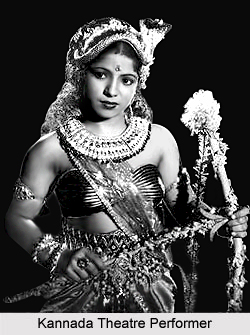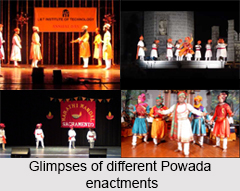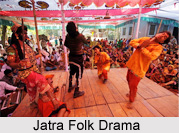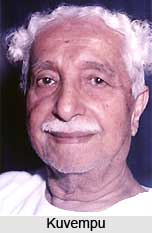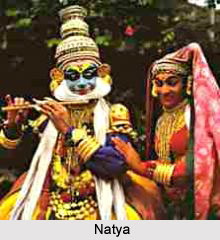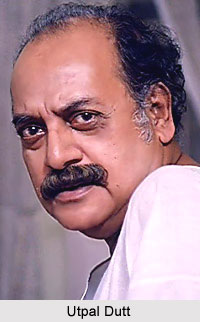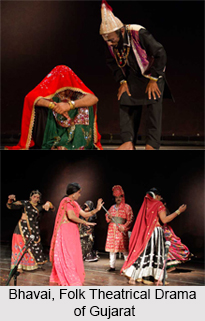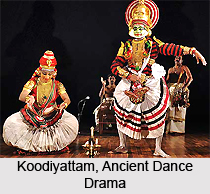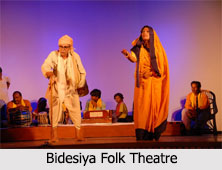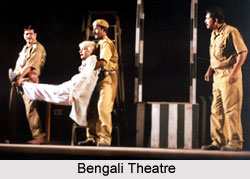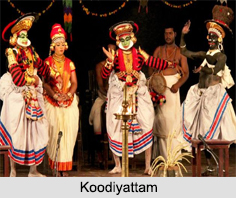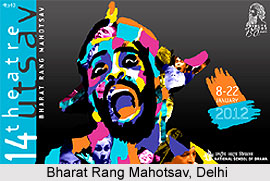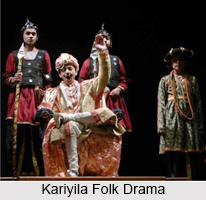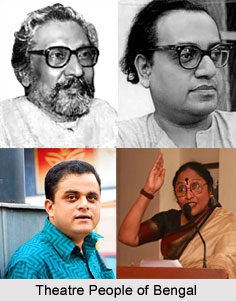Amateur Kannada theatre is not very old concept. The formation of amateur theatre took place in Kannada around the 1950s. With the "Karnataka Renaissance", lot of new plays, dramas, novels, short stories and poems were getting written. There were three major factors that helped with the process of experimentation in Kannada theatre. These factors were the excesses of the professional stage, the influence of a study of the West, and finally, the new impact of modern times. To the intelligentsia, the prevailing professional theatre appeared primitive and crude when looked from western standards. There was a strong protest, and it was consciously directed towards the themes, music, scenery, stage design and presentations, especially the duration (which were quite lengthy) of professional theatre in Kannada. As a result it became very difficult for professional theatre to serve a particular section of the society, as it was fast changing its tastes owning to the inevitable influence of West.
Birth of Amateur Theatre in Karnataka
Amateur Kannada theatre was born out of an attempt to extricate the stage from the hands of commercialism and to endow it with dignity and self-respect. This also helped create new awareness of true function of theatre, its need to interpret, expose, criticize and also guide the society. The Amateur Kannada Theatre, unlike old time professional theatre, had the required strength to co-exist with cinema. This form of theatre laid significant emphasis on a rational and realistic approach to its themes. The plays written were mainly prose, a work devoid of colour, costumes, settings and music of professional drama. Lots of educated actors were roped into the theatre. It was intellectual and often symbolic: and its length was kept within the limits of reason, for its audiences were urban.
Though amateur theatre in Karnataka was criticized initially for being light-hearted and as woefully lacking in certain "essentials" of the drama - like dance, music and acting; but it should be admitted that with its coming, intelligence and originality found a place in the theatre. And good taste took prevalence.
Development of Amateur Theatre
Development of amateur Kannada theatre owes a lot to the coming of age of Kannada literature. This form of theatre, just for an occasional interpretation or a parody, it almost completely discarded the once supreme mythological and even historical themes. The emphasis was now placed on social themes. One act plays and experiments with impromptu plays were carried out. New forms of drama like the Opera, the Dream play, Mime, Fantasy, the Shadow play and the Radio play came into the fore. Hence, amateur theatre established itself as a significant part of artistic life of towns, and also helped to substitute, enrich and strengthen a decadent professional stage.
Amateur Troupes in Kannada Theatre
The seeds of the amateur theatre of Karnataka have been sown by Prachya Kreeda Samvardhana Mandali of Madihal, a suburb of Dharwar. It had become a custom with the Mandali by the year 1899 to stage a mythological drama on the occasion of its Annual Ganapati festival. It became popular for some of its other plays as well.
The Literary and Dramatic Association of Mysore came into being in 1919. It closely followed the Amateur Dramatic Association of Bengaluru in the aims it set before itself and in its working methods. The Chaya Artists of Bengaluru mark an era in the Amateur dramatic movement. The troupe blossomed out of the dramatic traditions fostered by the "Old Boys Association" of the National School of Bengaluru and the Malleswaram Dramatic Association. The two wings joined together in 1937 under the name Karnataka Hindi Amateurs and made an extensive effort to popularise Hindi theatre and also to provide good dramatic entertainment to a little circle of friends and families.
There were many troupes that came into being, but not all survived. Only a few of them lived long and well. Among them, mention may be made of the Youngmen`s Football Club Amateurs of Gadag, the Vasudeva Amateurs of Bagalkot, the Bharat Sevak Samaj of Bijapur and the Karnataka College Amateurs, Kannada Natya Vilasigala Sangha and the Kalopasak Mandal of Dharwar.
Playwrights of Amateur Theatre
Playwrights of amateur theatre were the pivotal force behind the amateur theatre movement in Karnataka. They were responsible for the success and failure of a play, more than the actor and producer. The plays were written keeping in mind the changed psyche of the audience and society. The miracle is performed by the playwright with his penetrating analysis of social themes, his sweep of new ideas, his ` intellectual` humour and his simple but effective technique of play-writing itself. It is in this sense, that he is the maker of the amateur stage more than the actor and producer. The history of the amateur stage, therefore, is essentially the story of the playwright, his way of thinking and the nature of his contributions. Almost every man of letters; be he a poet, novelist or a short story writer, tried his hand at plays. Kannada drama soon became a force to reckon with. A look into the contributions of leading playwrights of the new era would give a picture of the amateur stage itself, its ideas and achievement







